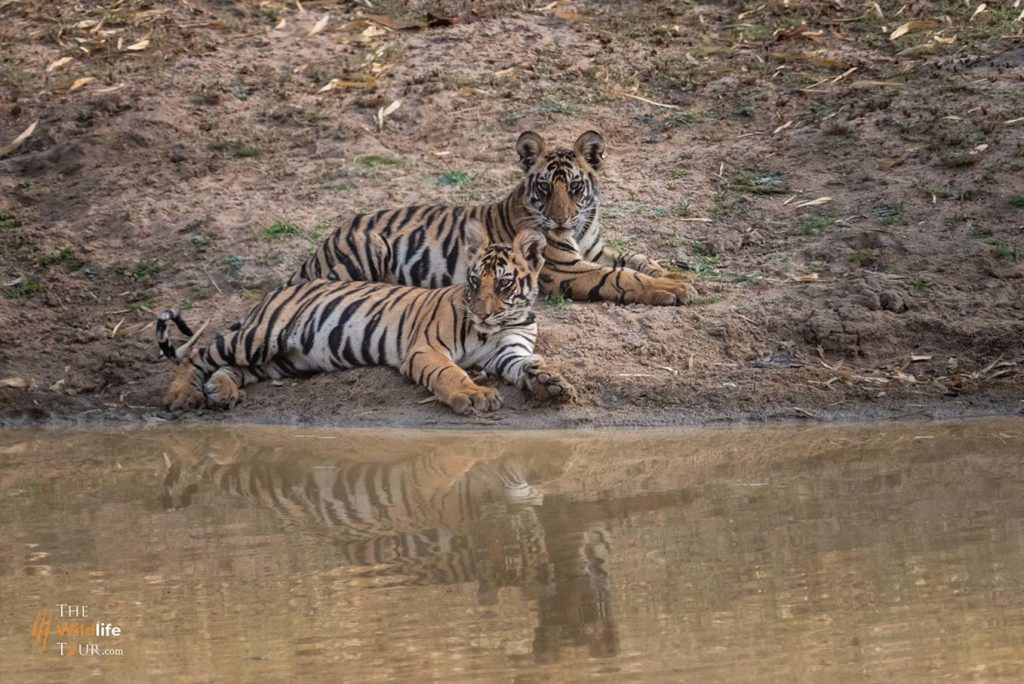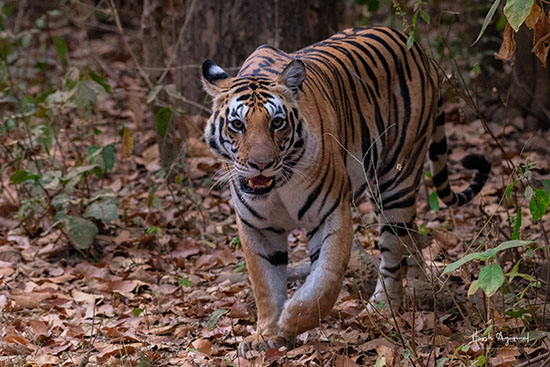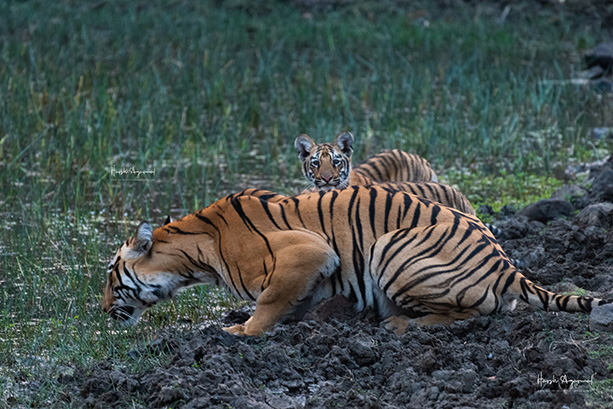PM Modi released the results of the latest Tiger Census, which show that the tiger population in India is increasing.
Introduction
Tiger Census Figures Released by PM Modi: 3,167 Tigers in India
On Sunday, Prime Minister Narendra Modi revealed the results of the latest figures of India’s Tiger Census, showing that the number of tigers in the country has once again increased and amounting to 3,167 Tigers in India in the wild as of 2022. According to the 2018 Tiger Census, which was published in July 2019, there were 2,967 tigers in India. The country’s tiger population has grown by 200, or 6.7%, in the previous four years.
In India, there were 1,411 tigers in 2006, 1,706 in 2010, and 2,226 in the 2014 evaluation cycle.
PM Modi announces the latest Tiger Census figures.
While launching the International Big Cat Alliance in Mysuru, Karnataka, the first of its type in the country and organized to commemorate 50 years of Project Tiger, Prime Minister Modi announced the results of the Tiger Census. Seven of the world’s largest big cats—tigers, lions, leopards, snow leopards, pumas, jaguars, and cheetahs—will be the subject of the three-day conference, which will emphasise their preservation and conservation.
Modi had requested an alliance of world leaders to combat poaching and the illegal wildlife trade in Asia in 2019. The Prime Minister visited the Bandipur Tiger Reserve and the Theppakadu Elephant Camp in the Mudumalai Tiger Reserve before the conference began.
Project Tiger has been in existence for 50 years. Project Tiger’s accomplishments have been a triumph for the entire world, not just India. In addition to saving the tiger, India has created a great ecosystem for it to thrive in. We are really excited that, as we approach our 75th anniversary of independence, India is home to approximately 75% of the world’s tigers and that its tiger reserves cover an area of 75,000 square kilometers. Everyone’s efforts have made this possible, he remarked in his speech to the global summit.
Increase in tiger population in India.
Why is the tiger population growing in India even while it is steady or declining in other regions of the world? He continued: Our traditions and culture are intertwined with a relationship to biodiversity and the environment.
PM Modi said that murals in Madhya Pradesh caves that date back 10,000 years show connections to tigers. He said that these connections go back thousands of years. He also emphasized the close ties that tribal tribes in the nation have with tigers and how many communities in India adore the big cat.
The only place where you can find an Asiatic lion is in India, which also has the most Asiatic elephants, single-horned rhinos, and leopards in the world. The prime minister also pointed out that there are now more lions, leopards, elephants, and single-horned rhinos.
“With only 2.4% of the world’s land area, India is responsible for 8% of the diversity of wildlife. The world’s largest tiger range country is India. We have the largest population of Asiatic elephants in the world nearly 30,000 and the highest density of single-horned rhinoceroses, he noted.
The number of Asiatic lions has grown from 525 in 2015 to 675 in 2020 because of efforts to protect them. Meanwhile, the number of leopards has grown by 60% in just four years. The National Mission for Clean Ganga has also contributed to the revival of some aquatic species that are in danger of extinction. “This is because of people’s involvement in conservation and the culture of preservation,” Modi added. This increase is a testament to the efforts of the Indian government and conservation organizations to protect and conserve the country’s tiger population. It is exciting news for conservationists and wildlife enthusiasts alike.
Efforts to protect and conserve tigers worldwide.
PM Modi also said that “ecology and economy” don’t have to be in conflict, and that it’s important to make an emotional and economic connection between people and wildlife to make sure conservation works.
The Prime Minister asserted that “wildlife protection is not just the responsibility of one country but the responsibility of the entire world, which is why an international alliance is so important,” adding that the international conference will ensure the exchange of best practices as well as financial and technical resources. “Research, training, and capacity building will be prioritized,” he continued.

The man-animal conflict has decreased near tiger reserves because of education campaigns, benefiting the local economy. “This has had a good impact on human life and the environment,” he remarked. Modi praised the Union government’s initiative to reintroduce cheetahs, which have been extinct in India, calling it the “first trans-continental transfer” considering the recent births of four cheetah kittens there.
“Conservation of wildlife is a global issue, not just a concern of one country.” The International (Big Cat) Alliance is essential, he said, adding that it will aid in providing financial and technical support for wildlife protection and conservation.
“The Alliance’s main goal is to protect seven of the world’s great cats… As members of the alliance, these countries can assist partner countries by sharing their expertise and knowledge of these creatures. For research, training, and capacity building, the Alliance will collaborate, he said.
The importance of preserving and adding tiger habitats was emphasized.
The increase in the number of tigers in India is a positive sign, but it is important to remember that their habitats must also be preserved. Tigers require large areas of forest and grassland to roam and hunt, and their habitats are under threat from deforestation, poaching, and human encroachment. The Indian government and conservation organizations must continue to work together to protect and preserve these habitats, ensuring that tigers have the space and resources they need to thrive. Only then can we ensure a bright future for these magnificent animals in India.
The Shivalik hills and the Gangetic flood plains have had the most increases in population, whereas the Western Ghats have seen a drop in numbers despite claims that the “major populations” are steady.
The number of tiger reserves has increased since 1973, when Project Tiger was founded, from nine reserves covering 18,278 square kilometers to 53 reserves encompassing 75,796 square kilometers, or nearly 2.3% of India’s total area.
India is home to about 75% of the world’s tiger population, and it is seen as a conservation success story that should be imitated for its ability to increase tiger numbers without the use of fenced reserves, from 1,411 in 2006 to at least 3,167 at present. However, according to experts, the majority of the country’s tigers are concentrated in a small number of reserves that are quickly approaching their carrying capacity peak, making it difficult to guarantee further population expansion unless new areas are developed as reserves.
India is currently considering global operations to translocate tigers into other regions in the wake of the translocation of cheetahs from Africa. It is collaborating with Cambodia to establish a suitable habitat there and transport a few tigers from India to revive the big cat’s population there, where poaching has caused the tiger to go extinct.


